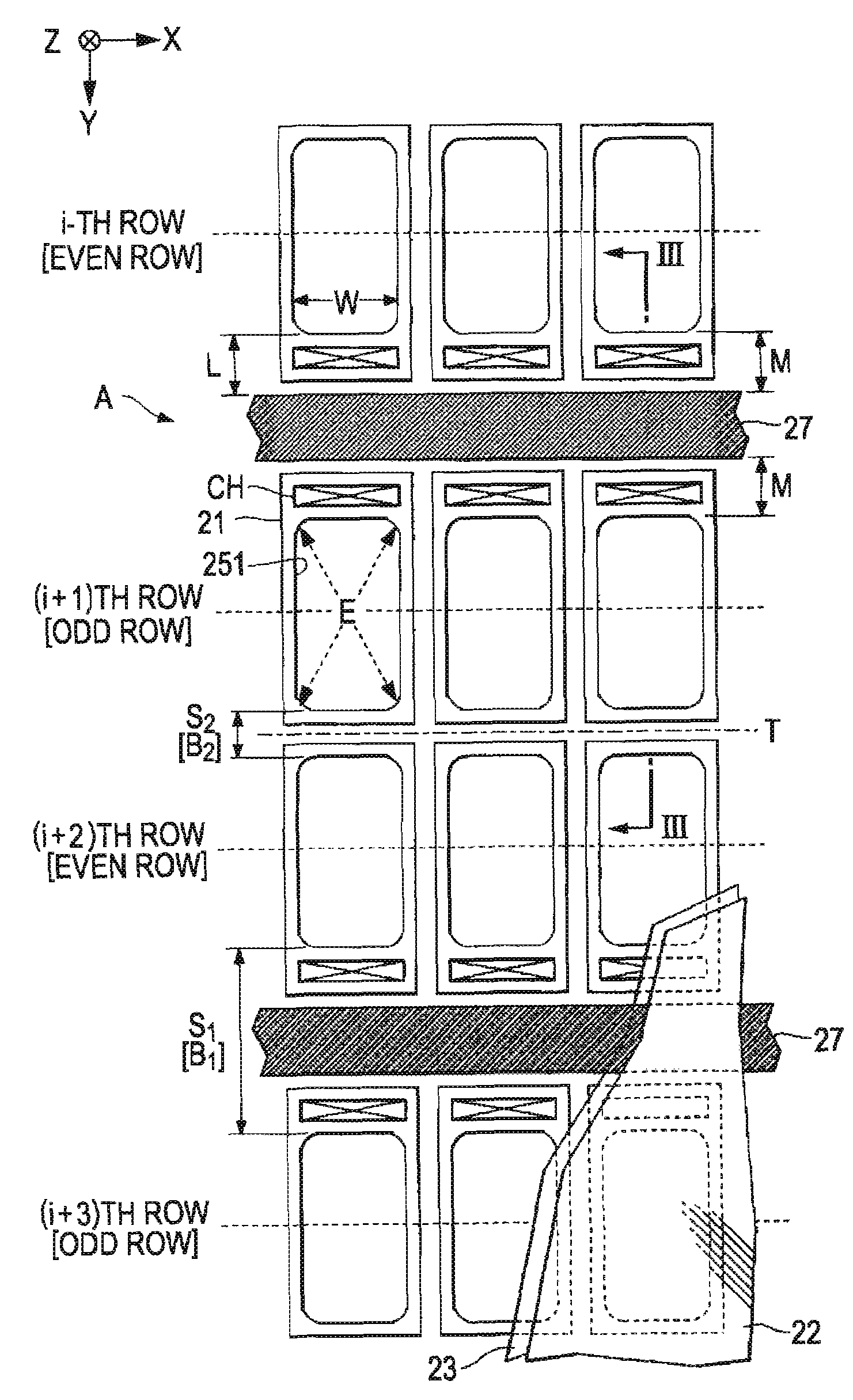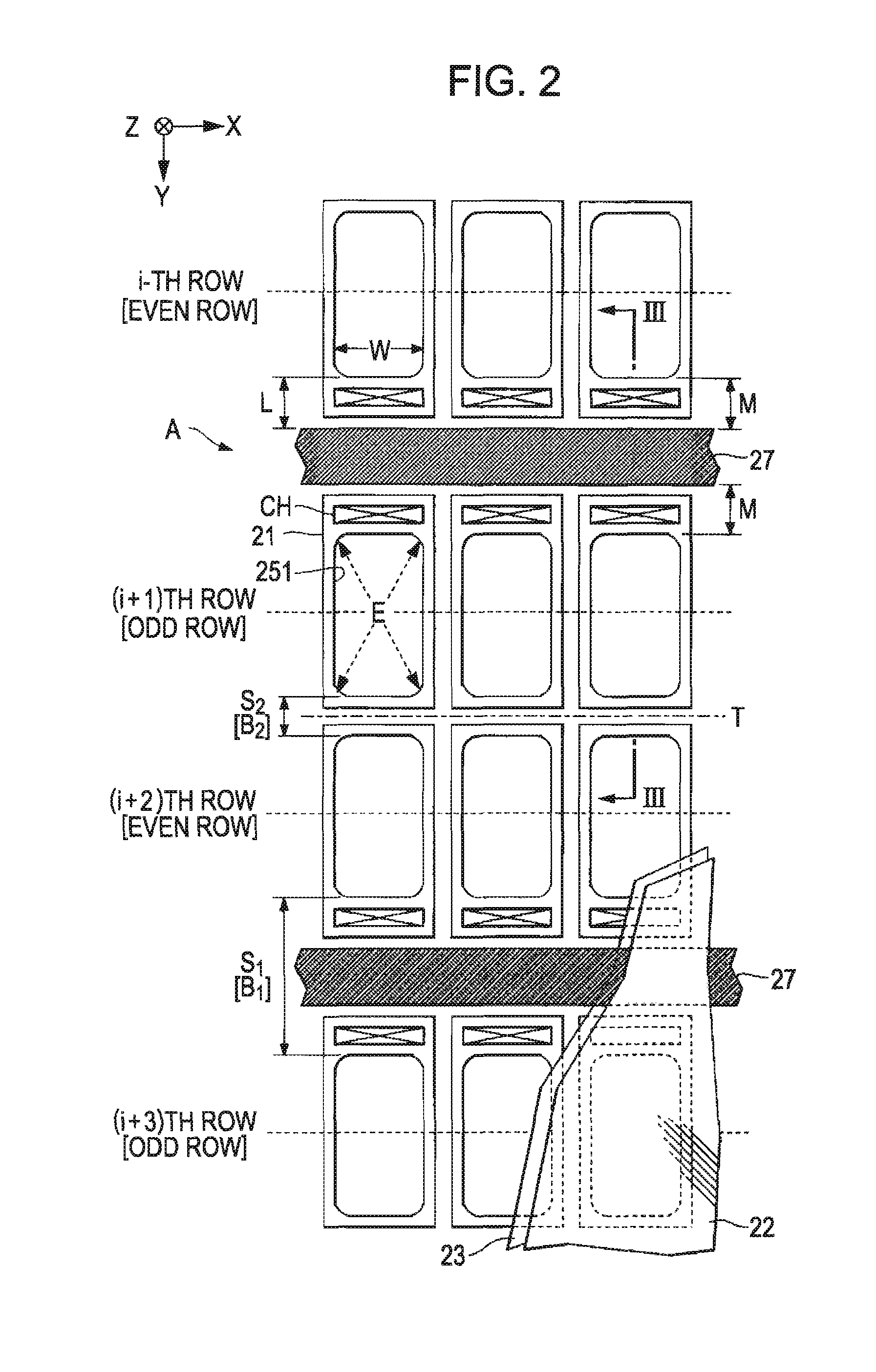Light-emitting device, method for making the same, and electronic apparatus
a light-emitting device and light-emitting technology, applied in the field of light-emitting devices, can solve the problems of insufficient control of voltage drop of the second electrode, and it is more difficult to increase the aperture ratio and sufficiently control the voltage drop. , to achieve the effect of high mechanical strength
- Summary
- Abstract
- Description
- Claims
- Application Information
AI Technical Summary
Benefits of technology
Problems solved by technology
Method used
Image
Examples
first exemplary embodiment
A: First Exemplary Embodiment
Configuration of Light-Emitting Device
[0033]FIG. 1 is a circuit diagram showing the electrical configuration of a light-emitting device according to an exemplary embodiment of the invention. The light-emitting device has an element array portion A in which a plurality of unit circuits (pixel circuits) U are arranged. In the element array portion A are formed a plurality of scanning lines 12 extending in the X direction and a plurality of data lines 14 extending in the Y direction perpendicular to the X direction. The unit circuits U are disposed at positions corresponding to the intersections of the scanning lines 12 and the data lines 14. Therefore, the plurality of unit circuits U are arranged in the X direction and the Y direction in a matrix.
[0034]One unit circuit U Includes a drive transistor Tdr and a light-emitting element E disposed on a route from a source line 16 (source voltage VEL) to a ground line 18 (ground voltage Gnd). The light-emitting ...
second exemplary embodiment
B: Second Exemplary Embodiment
[0058]Next, a second exemplary embodiment of the invention will be described. In the description of this exemplary embodiment, the same reference numerals will be used to designate the same components as those in the first exemplary embodiment, so that the detailed description will be omitted.
[0059]FIG. 5 is a plan view showing the configuration of the element array portion A according to the exemplary embodiment (a plan view corresponding to FIG. 2). In the first exemplary embodiment, the auxiliary interconnects 27 extend along the short side of the light-emitting elements E (in the X direction). In contrast, in the exemplary embodiments the auxiliary interconnects 27 extend along the long side of the light-emitting elements E (in the Y direction) as shown in FIG. 5. FIG. 5 shows three rows of light-emitting elements E belonging to the j-th to (j+3)th columns. The j-th column and the (j+2)th column are even columns, and the (j+1)th column and the (j+3)...
third exemplary embodiment
C: Third Exemplary Embodiment
[0063]Next, a third exemplary embodiment of the invention will be described. In the description of this exemplary embodiment, the same reference numerals will be used to designate the same components as those in the first exemplary embodiment, so that the detailed description will be omitted.
[0064]FIG. 6 is a plan view showing the configuration of the element array portion A according to the exemplary embodiment (a plan view corresponding to FIG. 2). FIG. 7 is a sectional view taken along line VII-VII of FIG. 6. In the first exemplary embodiment, the auxiliary interconnects 27 do note overlap with the contact holes CH. In contrast, in the exemplary embodiment, as shown in FIGS. 6 and 7, the auxiliary interconnects 27 overlap with the contact holes CH as viewed from the Z direction. That is to say, the auxiliary interconnects 27 have a width substantially equal to the width of the partition layer 25, and overlap with the contact holes CH corresponding to ...
PUM
 Login to View More
Login to View More Abstract
Description
Claims
Application Information
 Login to View More
Login to View More - R&D
- Intellectual Property
- Life Sciences
- Materials
- Tech Scout
- Unparalleled Data Quality
- Higher Quality Content
- 60% Fewer Hallucinations
Browse by: Latest US Patents, China's latest patents, Technical Efficacy Thesaurus, Application Domain, Technology Topic, Popular Technical Reports.
© 2025 PatSnap. All rights reserved.Legal|Privacy policy|Modern Slavery Act Transparency Statement|Sitemap|About US| Contact US: help@patsnap.com



